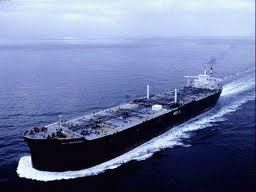
Demand for ships and the goods they carry around the world will largely dictate the strategies of the shipping industry, as they always have done. New considerations that are likely to play heavily into the design of new ships, however, include the demand for far
greater and more demonstrable sustainability, with less of an environmental footprint.
Could the wind be harnessed as once it was as the main motive power for merchant ships? We have already seen the use of wind-assistance employing large kites, but perhaps the availability of new materials for sails, the ability to mechanise sail handling, could see large ships being given a help from this generally available and free source of motive power.
Might the difficulties of obtaining competent seagoing manpower, and the reluctance of people to seek a sea career, persuade designers to a far greater degree of automation than we have today – even to the complete removal of the human crew? After all, if we can remotely control landers on the surface of Mars or the Moon, we can surely remotely control a ship on a deep sea voyage? Indeed, in the 1980s a Japanese project proved that it was perfectly feasible to send a large ship across the North Pacific with nobody aboard her, and in terms of instrumentation and communications there have been great advances in the past thirty years.
Of course, the scourge of piracy would have to be properly dealt with and the law changed from the present definition of a crewless ship as being a derelict, but in practical terms it could represent a useful breakthrough.
Could the time be ripe in 2030 for a change away from steel as the main constructional material, 200 years after iron started to challenge the wooden walls that had reigned supreme since shipbuilding began? We already have interesting designs using “sandwich plate” employing polymers, and which offer great advances in terms of lightness, ease of construction, and ability to withstand shocks and stresses. Could composites, which can be produced to provide the exact characteristics that are needed, emigrate from the world of aviation construction and racing yachts, to commercial ships?
Some suggest that the fantastic development of the container which revolutionised cargo liner shipping in the 1970s could be ready for another great breakthrough. The ships surely cannot get much bigger without becoming impossible to accommodate in a reasonable number of ports. But what about a ship that can be divided up into sections, and which could be used to operate a “milk round” of smaller ports, with a separate bow and propulsion section? Does this sound impossible? Well, just look back 20 years and see what we thought then
Source: Bimco
We use cookies to improve your experience. By continuing to use our site, you accept our Cookies, Privacy Policy,Terms and Conditions. Close X